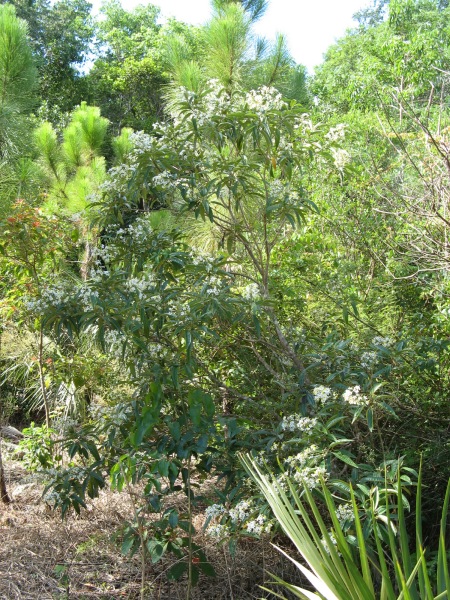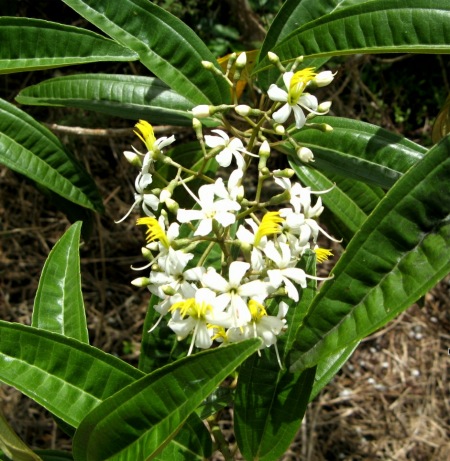Tetrazygia Bicolor
I’m not sure why, but there are very few native plants in South Florida with showy flowers, unless you include the palm family. The many gorgeous flowering trees present in South Florida, like the yellow and pink Tabebuia, Royal Poinciana, various species of Frangipani, Shower of Gold and Jacaranda are all natives of other lands. In this post and the two following, I am going to show you three species that are among the more colorful of the native plants of South Florida.
I have always been fond of the West Indian Lilac (tetrazygia bicolor), but I never had one in my yard until I bought my present place 10 years ago. It has a very striking leaf with three prominent ribs lengthwise. I know of no other plant with such a distinctive leaf. It isn’t easy to find these plants in nurseries but I was fortunate to have a couple of plants on my property and also found some small babies that I transplanted into pots and then planted the few that survived. Native plants are tough to propagate and there is a high mortality rate, for some reason. Today, I have three decent sized specimens of the plant – the shortest shrub is about 5′ tall. Here is a picture of one of the bigger specimens:

The Dade County pines in the background are quite a story, too. I planted 47 of them and only 8 survived. Speaking of high mortality …
For a larger version (how do folks make it so that you can click on an image and the picture opens larger in a new window?), click here.
Here is a close-up of the flower stalk of the tetrazygia bicolor bush:

And here is a larger version.
As far as I know, no part of this plant is used in folk medicine. Maybe just enjoying the beauty of the flowers is enough, though!

I’ve never had much luck moving native plants here. I consider myself lucky to cultivate the ones that just appear.
That’s a beautiful plant! The flowers are gorgeous and I love the leaves, too – very striking with those ribs and the glossy green color.
I’ve had the same experience propagating native plants in this region. They’re finicky under cultivation, even though out in the wild, they find their niche and do just fine with no help from a gardener at all. The literature exhorts us to match their placement and culture to their native preferences – some like to grow in sandy soil, with occasional watering, others prefer deep loam and shade – but I’ve found that’s not an exact formula for success.
I’ve killed quite a few natives, I think by overwatering, more than anything. You’ve done well with yours!